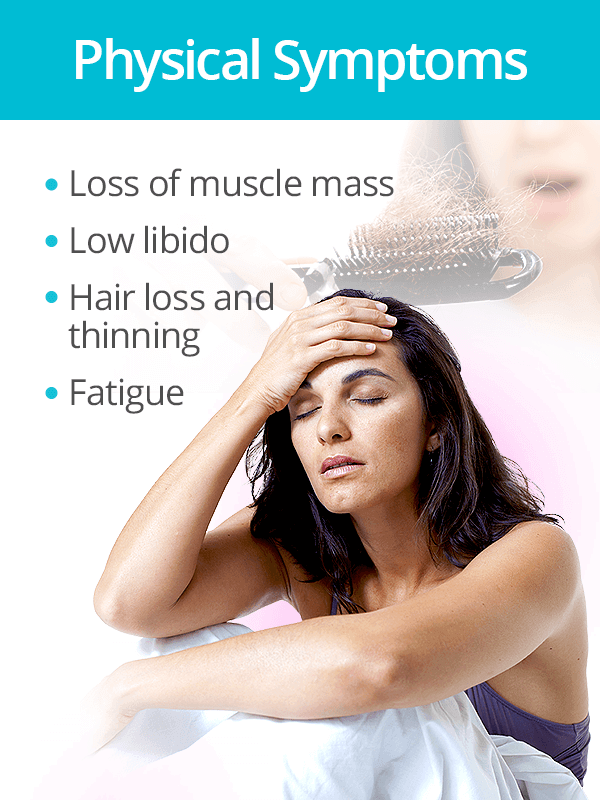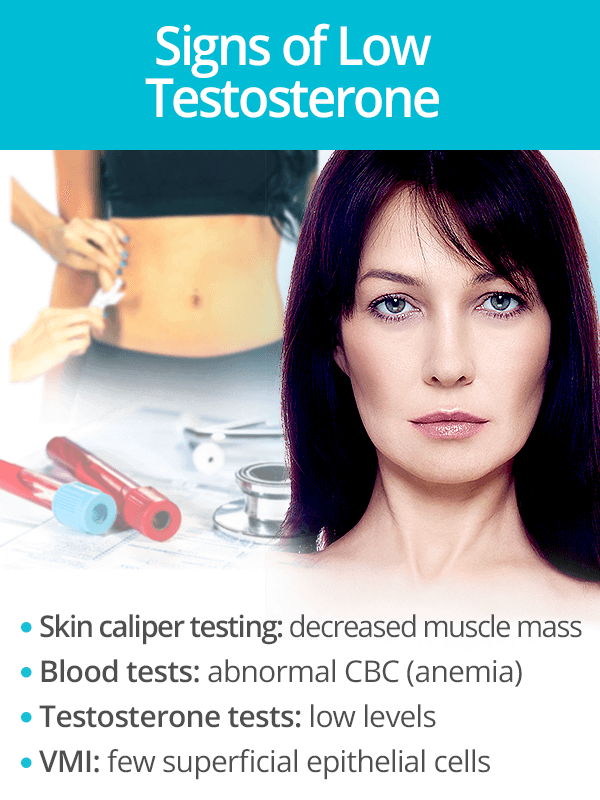Because low testosterone symptoms and signs are similar to those of various other conditions, it is it is not uncommon of the hormonal imbalance gradually exacerbate before being correctly diagnosed.
Accordingly, in attempt to prevent the onset of more serious conditions, continue reading to discover more about signs and symptoms of low testosterone levels.
Symptoms of Low Testosterone Levels

Lack of testosterone symptoms - many of which are listed below - can occur throughout life and affect more than just the reproductive system.
Physical Symptoms
- Physical fatigue
- Loss of muscle mass and strength
- Low libido
- Rheumatoid complaints
- Incontinence
- Hot flashes
- Night sweats
- Hair loss and thinning
- Changes in voice (hoarseness)
- Breast pain
Psychological Symptoms
- Depression
- Low self-esteem
- Lack of well-being
- Memory lapses
- Anxiety
- Irritability
Signs of Low Testosterone Levels

Often times, the symptoms of low testosterone levels go undiagnosed or misdiagnosed since they can be mistaken for other health conditions, such as depression or stress.
Nevertheless, doctors can use the following signs from medical test results to diagnose a lack of testosterone in the body.
- Skin caliper shows decreased muscle mass (results recorded monthly for at least 3 months)
- Blood tests showing abnormal TSH, T3, or T4 levels
- Complete blood count (CBC) signifying anemia
- Vaginal maturation index (VMI) showing few superficial epithelial cells (indicating vaginal atrophy)
- Testosterone tests (blood, urine, or saliva) proving low levels
Thus, the testosterone imbalance can be corrected before further complications develop if it is detected in a timely manner. More serious conditions may occur from a testosterone deficiency if low testosterone levels persist for long.
Continue reading to learn more about increasing testosterone levels in order to evade the future onset of low testosterone-related health conditions.
Sources
- Glaser, R. & Dimitrakakis, C. (2013). Testosterone therapy in women: Myths and misconceptions. Maturitas, 74(3), 230-234. doi: 10.1016/j.maturitas.2013.01.003
- Goldstein, I. et al. (2013). Multidisciplinary Overview of Vaginal Atrophy and Associated Genitourinary Symptoms in Postmenopausal Women. Sexual Medicine, 1(2), 44-53. doi: 10.1002/sm2.17
- Jakiel, G. & Baran, A. (2005). Androgen deficiency in women. Endokrynologia Polska, 56(6), 1016-1020. Retrieved August 6, 2018, from https://www.ncbi.nlm.nih.gov/pubmed/16821229
- Mayo Clinic. (2017). Anemia: Diagnosis & treatment. Retrieved July 20, 2018, from https://www.mayoclinic.org/diseases-conditions/anemia/diagnosis-treatment/drc-20351366
- Victoria State Government. (2017). Androgen deficiency in women. Retrieved July 20, 2018, from https://www.betterhealth.vic.gov.au/health/conditionsandtreatments/androgen-deficiency-in-women
